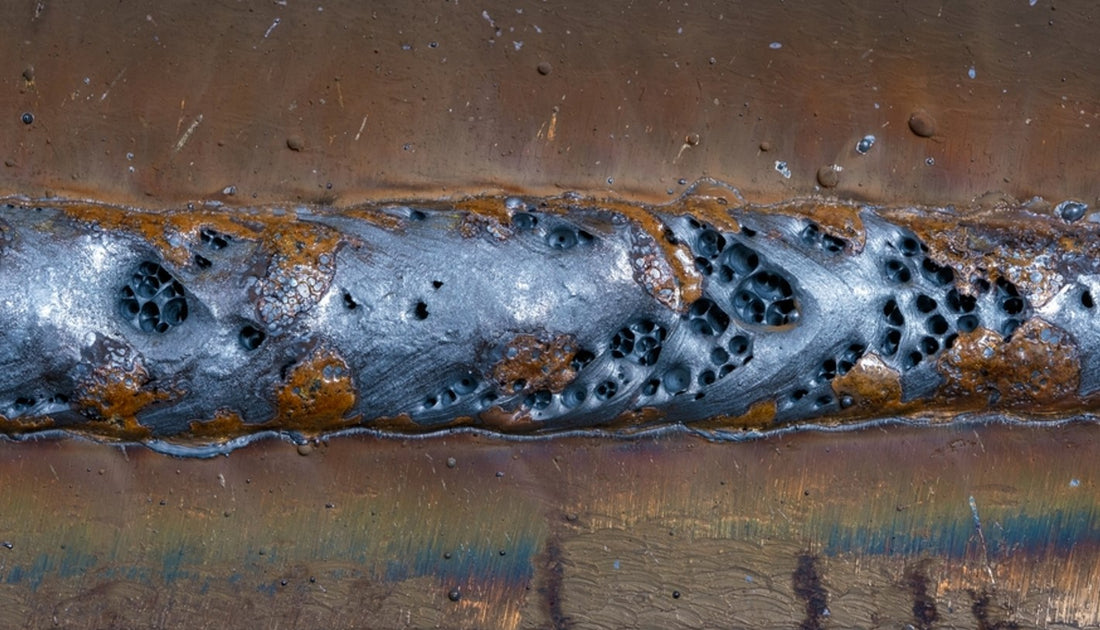What is Porosity in Welding: Best Practices for Staying Clear Of Permeable Welds
What is Porosity in Welding: Best Practices for Staying Clear Of Permeable Welds
Blog Article
The Scientific Research Behind Porosity: A Comprehensive Overview for Welders and Fabricators
Comprehending the elaborate mechanisms behind porosity in welding is essential for welders and fabricators making every effort for flawless craftsmanship. From the composition of the base products to the ins and outs of the welding process itself, a multitude of variables conspire to either aggravate or relieve the existence of porosity.
Understanding Porosity in Welding
FIRST SENTENCE:
Examination of porosity in welding exposes essential understandings into the stability and quality of the weld joint. Porosity, defined by the visibility of dental caries or spaces within the weld metal, is a typical problem in welding procedures. These voids, otherwise appropriately resolved, can compromise the structural honesty and mechanical residential properties of the weld, leading to prospective failings in the ended up product.

To discover and measure porosity, non-destructive testing techniques such as ultrasonic testing or X-ray evaluation are typically utilized. These techniques enable the identification of inner issues without endangering the stability of the weld. By evaluating the dimension, form, and circulation of porosity within a weld, welders can make educated decisions to improve their welding procedures and accomplish sounder weld joints.

Factors Affecting Porosity Development
The event of porosity in welding is affected by a myriad of factors, ranging from gas shielding effectiveness to the complexities of welding specification settings. Welding specifications, including voltage, current, travel speed, and electrode type, additionally impact porosity development. The welding strategy utilized, such as gas metal arc welding (GMAW) or protected metal arc welding (SMAW), can influence porosity formation due to variants in warmth circulation and gas coverage - What is Porosity.
Results of Porosity on Weld Top Quality
Porosity formation substantially endangers the structural integrity and mechanical residential properties of bonded joints. When porosity is present in a weld, it creates gaps or dental caries within the product, minimizing the general strength of the joint. These gaps work as stress and anxiety focus points, making the weld more at risk to splitting and failure under lots. The existence of porosity likewise weakens the weld's resistance to deterioration, as the caught air or gases within the voids can respond with the surrounding environment, leading to destruction pop over to these guys in time. Additionally, porosity can prevent the weld's ability to hold up against stress or influence, additional jeopardizing the general quality and integrity of the welded structure. In important applications such as aerospace, automobile, or architectural buildings, where safety and security and toughness are extremely important, the destructive effects of porosity on weld high quality can have severe consequences, stressing the significance of minimizing porosity with correct welding methods and treatments.
Methods to Lessen Porosity
Furthermore, making use of the proper welding parameters, such as the proper voltage, present, and travel rate, is essential in protecting against porosity. Preserving a consistent arc size and angle during welding additionally assists lower the likelihood of porosity.

In addition, choosing the appropriate shielding gas and preserving correct gas flow prices are vital in minimizing porosity. Utilizing the proper welding technique, such as back-stepping or utilizing a weaving activity, can also assist disperse heat evenly and minimize the opportunities of porosity formation. Lastly, guaranteeing correct air flow in the welding environment to remove any type of possible resources of contamination is important for accomplishing porosity-free welds. By executing these methods, welders can efficiently lessen porosity and generate top quality welded joints.

Advanced Solutions for Porosity Control
Applying innovative technologies and cutting-edge approaches plays a critical function in accomplishing superior control over porosity in welding procedures. One sophisticated solution is making use of sophisticated gas blends. Protecting gases like helium or a mixture of argon and click to investigate hydrogen can aid decrease porosity by providing much better arc security and improved gas protection. Additionally, utilizing advanced welding methods such as pulsed MIG welding or modified environment welding can also aid alleviate porosity issues.
Another innovative solution entails the use of sophisticated welding tools. As an example, utilizing devices with built-in attributes like waveform control and advanced power sources can improve weld top quality and reduce porosity risks. In addition, the implementation of automated welding systems with accurate control over specifications can substantially decrease porosity issues.
Additionally, incorporating advanced monitoring and inspection innovations such as why not check here real-time X-ray imaging or automated ultrasonic screening can aid in identifying porosity early in the welding procedure, permitting immediate corrective actions. Overall, incorporating these innovative options can considerably improve porosity control and boost the total high quality of welded components.
Verdict
In verdict, comprehending the science behind porosity in welding is vital for welders and fabricators to generate high-grade welds. By determining the elements affecting porosity formation and executing methods to reduce it, welders can enhance the total weld quality. Advanced services for porosity control can even more enhance the welding process and make certain a strong and dependable weld. It is very important for welders to constantly educate themselves on porosity and carry out finest practices to attain optimal outcomes.
Report this page